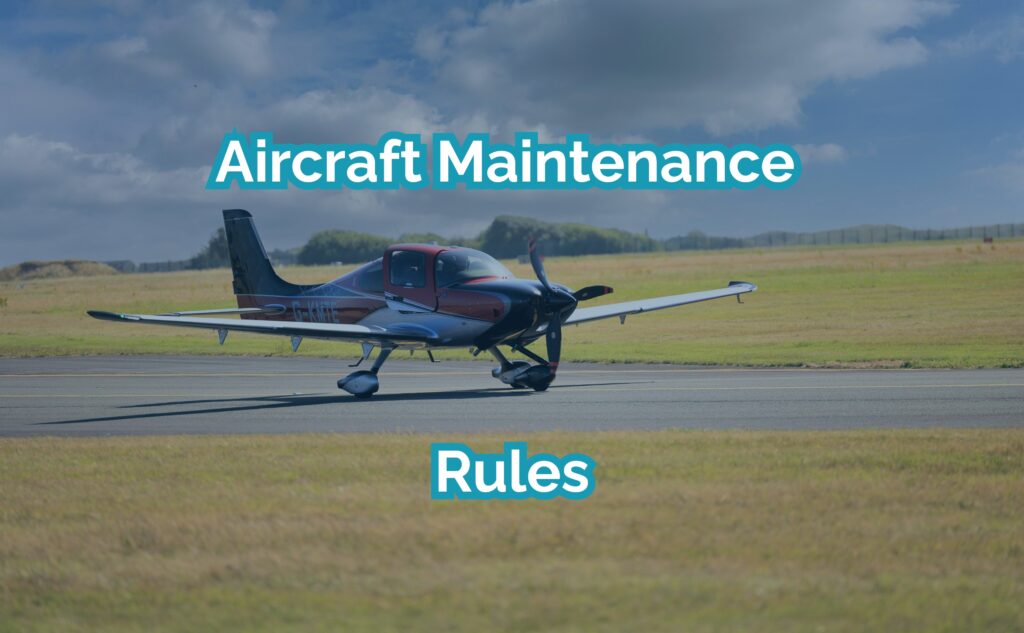
Aircraft Maintenance Rules: Set Clear Expectations With Your Maintenance Shop and Aircraft Mechanic
Why Defining Aircraft Maintenance Rules Matters for Every Pilot-Owner.
Aircraft ownership comes with responsibility. One of the most important—but often overlooked—areas is setting clear rules with your maintenance shop and aircraft mechanic.
Without clear expectations, confusion arises. Small misunderstandings can lead to major expenses, delays, or even safety issues. The solution? Define your aircraft maintenance rules from the start. When owners and maintenance providers align, everyone benefits.
Let’s walk through the basic rules every pilot-owner should agree on with their shop.
Define the Process for Scheduled and Unscheduled Aircraft Maintenance
Start by clarifying the maintenance sequence. Who does what—and when?
Make sure your aircraft mechanic knows when to act and when to stop. If something unexpected comes up, should they proceed or wait for your go-ahead? Define this now, not after a costly surprise.
For example:
- What happens during a routine inspection?
- When should they call you for approval?
- What’s the protocol for Airworthiness Reviews or Annual/Condition Inspections?
This framework avoids unnecessary delays and protects you from unauthorised work.
Always Insist on Written Estimates and a Discrepancy List
For all inspections and repairs—scheduled or unscheduled—require a written estimate. That’s one of the core aircraft maintenance rules.
Also request a detailed discrepancy list. It should include:
- Description of the issue
- Proposed corrective action
- Classification (Airworthiness, Recommended, or Discretionary)
- Estimated cost (labour, parts, third-party)
This list gives you clarity and control. It helps you prioritise actions based on safety, necessity, and long-term value.
Use Condition-Based Maintenance and Monitor Key Components
Don’t just follow time-based schedules. Implement a condition-based maintenance system with your shop.
That includes:
- Oil analysis during each oil change
- Borescope inspections with every spark plug inspection
- Recording data and trends over time
Agree on which parts and systems you’ll operate on-condition, rather than by calendar or flight hours. This helps extend component life and prevent unnecessary replacements.
Prioritise Repairs Over Replacements
Just because something is worn doesn’t mean it’s done. One of the most valuable aircraft maintenance rules: Repair if possible, replace only when necessary.
This is where the aviation standard IRAN (Inspect and Repair As Necessary) applies. Skilled mechanics should evaluate whether a part can be safely restored to service, rather than swapping it out by default.
This approach reduces costs and improves long-term reliability.
Demand a Structured Troubleshooting Approach
Troubleshooting should follow a clear, logical process. Avoid the shotgun approach. No guessing. No random part replacements.
Insist that your mechanic:
- Reviews the symptoms
- Checks data
- Verifies the issue
- Confirms the broken part before acting
This step-by-step method saves time, avoids unnecessary costs, and increases trust between you and your shop.
Agree on What You’ll Handle Under Pilot-Owner Maintenance
Most countries allow pilot-owner maintenance under defined rules. Make sure you know what’s allowed—and what you want to handle yourself.
Discuss this with your shop and write it down. Examples may include:
- Oil changes
- Spark plug cleaning and gapping
- Battery servicing
- Wheel and brake inspections
Note these items in your aircraft maintenance programme and let your shop know where your responsibilities begin and end.
Set the Rules Early—Save Headaches Later
Professional aircraft maintenance starts with professional communication. By setting clear aircraft maintenance rules, you create a foundation for trust, efficiency, and cost control.
Define expectations early. Use structured processes. Monitor condition. And stay involved. That’s how smart pilot-owners take control—and stay ahead.
About Quest Aeronautics
Quest Aeronautics is a state-certified engineering office for aviation, dedicated to shaping the future of general aviation by providing innovative and cost-effective solutions to enhance aircraft performance and operations. With a focus on CS/FAR-23 and experimental/amateur-built (E/A-B) aircraft, Quest Aeronautics provides a range of services including flight testing, aircraft operations and maintenance consulting, high-quality aviation products, and tailored support for E/A-B projects. Collaborating with industry-leading partners, Quest Aeronautics is committed to delivering unparalleled support and expertise to individuals and organisations in the general aviation market.
About Author
Sebastian, the founder of Quest Aeronautics, is a driven and enthusiastic individual with a passion for aviation. Before delving into aviation, he gained valuable experience as a chemical process engineer and laboratory technician. Sebastian holds a Master of Science in Engineering and a commercial pilot licence, with several fixed-wing aircraft ratings under his belt. He has also completed an introduction course for fixed-wing performance and flying qualities flight testing at the National Test Pilot School in Mojave, CA and is compliance verification engineer for flight.
